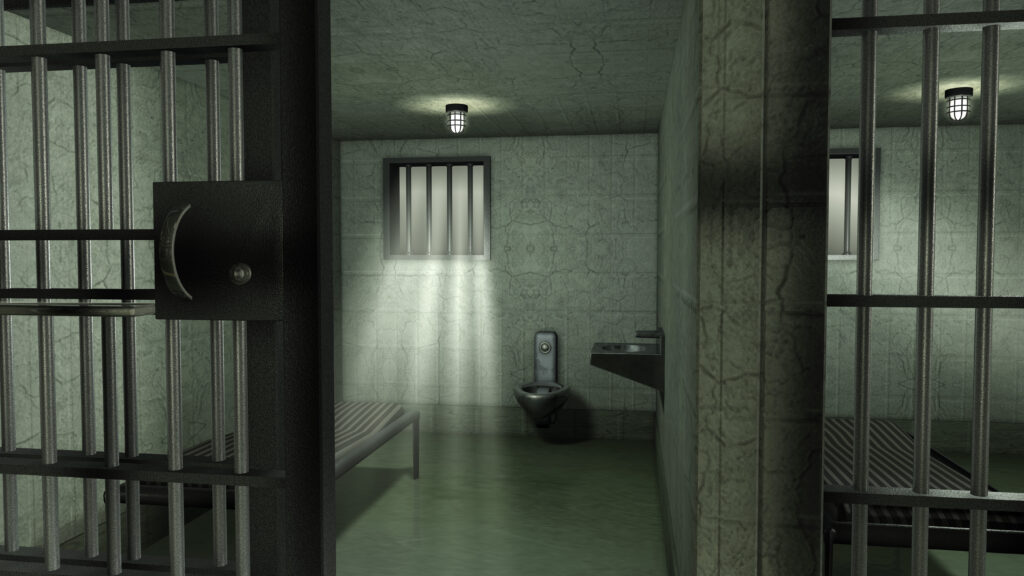An empty prison cell. Getty Images.
Ohio should create Community Corrections Facilities in Franklin, Cuyahoga, and Hamilton counties and stop sending children younger than 14 to juvenile correctional facilities, according to a recent report.
The Ohio Juvenile Justice Working Group issued 26 recommendations in their recently released report. Many of these recommendations would require action by the Ohio legislature.
“These recommendations all have merit and deserve consideration,” Gov. Mike DeWine said in a statement. “All kids deserve the opportunity to live up to their full, God-given potential, including youth who are incarcerated in state or local juvenile corrections facilities. We must send these youth home with the very best chance to succeed.”
DeWine formed the 11-member Ohio Juvenile Justice Working Group last November after a USA Today investigation reported Ohio incarcerated youth experience violence and neglect while the guards are overwhelmed.
The group met 10 times and was tasked with examining the state of juvenile justice and corrections in Ohio. It was chaired by Tom Stickrath, former director for the Ohio Department of Youth Services and the Ohio Department of Public Safety. He is currently the chair of the National Commission on Accreditation for Corrections.
In addition to the 11 members, there were four legislative advisors — state Rep. Cindy Abrams, R-Harrison; state Rep. Richard Brown, D-Canal Winchester; state Sen. Paula Hicks-Hudson, D-Toledo; and state Sen. Nathan Manning, R-North Ridgeville.
Recommendations
Ohio has three youth prisons in Circleville, Highland Hills, and Massillon. The report recommends DYS replace its current larger facilities with various smaller ones and consider allowing specialized housing units that could be based on age, developmental maturity, and physical size, among other things.
The Department of Youth Services had 822 children on its campuses, alternative placements, or under its community supervision as of May 1, according to the report. Fourteen were admitted when they were 13 years old, and two were younger than 13. The average age of an Ohio juvenile on a DYS campus was 17 years and 8 months and the average age of youth on DYS parole was 18 years and 7 months.
“Children between the ages of 10 and 13 are different in many respects from the vast majority of the DYS population,” according to the report. “The physical and cognitive developmental disparities with older youth create an increased risk of physical harm and trauma to children 13 and under when committed to a DYS facility.”
The highest number of juveniles committed to DYS come from Cuyahoga, Franklin, and Hamilton counties — which is why one of the group’s recommendations is to approve funds to create Community Corrections Facilities there.
“Establishing Community Corrections Facilities in the counties that commit the most youth to DYS would provide an additional option for relevant and eligible youth committed from those areas,” according to the report. “It would allow justice-involved youth to stay closer to home as well as allow for more family involvement in counseling as well as other matters related to youth habilitation.”
There are 11 Community Corrections Facilities throughout Ohio, in Lucas, Wood, Erie, Marion, Stark, Belmont, Perry, Athens, Greene, Montgomery, and Butler counties.
Curbing gang activity was also highlighted. The group recommends DYS get connected with state and local experts on gang activity and create a staff position in the Chief Inspector’s Office who is focused on gang behaviors.
“My primary role is to ensure my staff and youth work and live in an environment that supports opportunities for habilitation and growth,” DYS Director Amy Ast said in a statement. “The recommendations will serve as a bridge to chart our course for continuous improvement across the juvenile justice system. Ultimately, we will realize improved outcomes.”
Some of the recommendations deal with funding. For instance, JJWG recommends the legislature approve new funding in the DYS operating budget so county prosecutors who have DYS facilities (Cuyahoga, Pickaway, and Stark) can help with resources related to felonies that take place in those facilities.
Staffing shortages nationwide are a major problem for juvenile centers and Ohio is no exception.
“We cannot overemphasize the negative impact that the current staffing crisis has on the juvenile justice system’s ability to safeguard staff and youth and ensure effective habilitation throughout this state,” the report said.
To help with this, the group recommends DYS continue to build relationships with Ohio colleges and universities to expose students to careers working in the juvenile justice system.
Some other recommendations include passing legislation that would prevent first-time non-violent fifth-degree and fourth-degree felony offenses from being placed at a DYS facility and monthly meetings with the Ohio State Highway Patrol investigators and the facility’s superintendent to go over the open cases and investigations of youth at DYS facilities.
Follow OCJ Reporter Megan Henry on X.
SUPPORT NEWS YOU TRUST.

